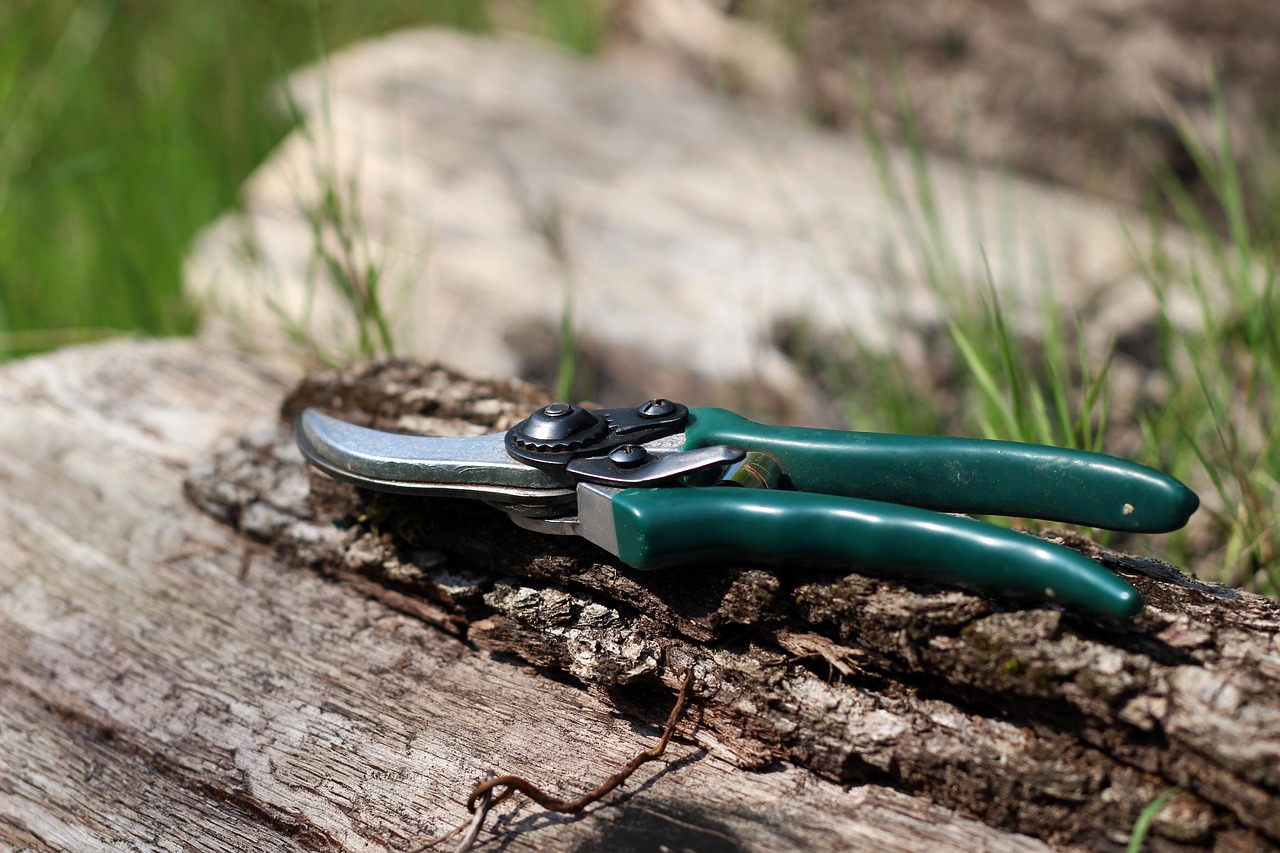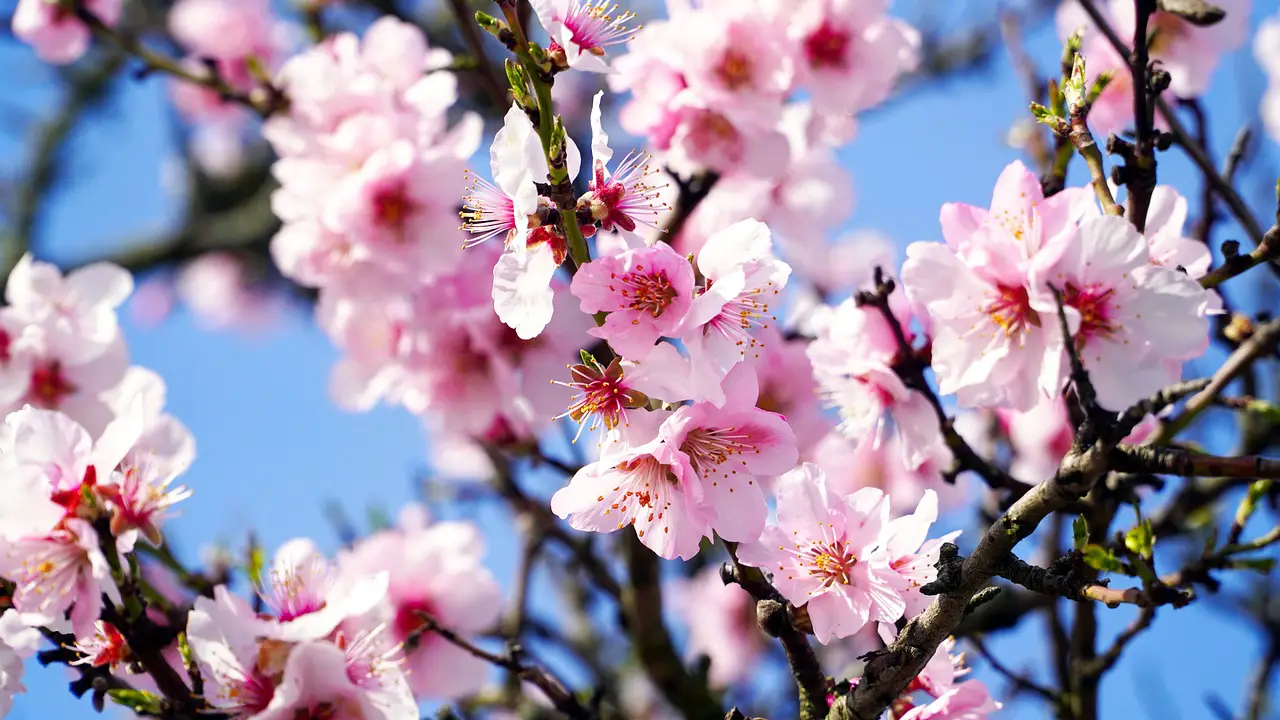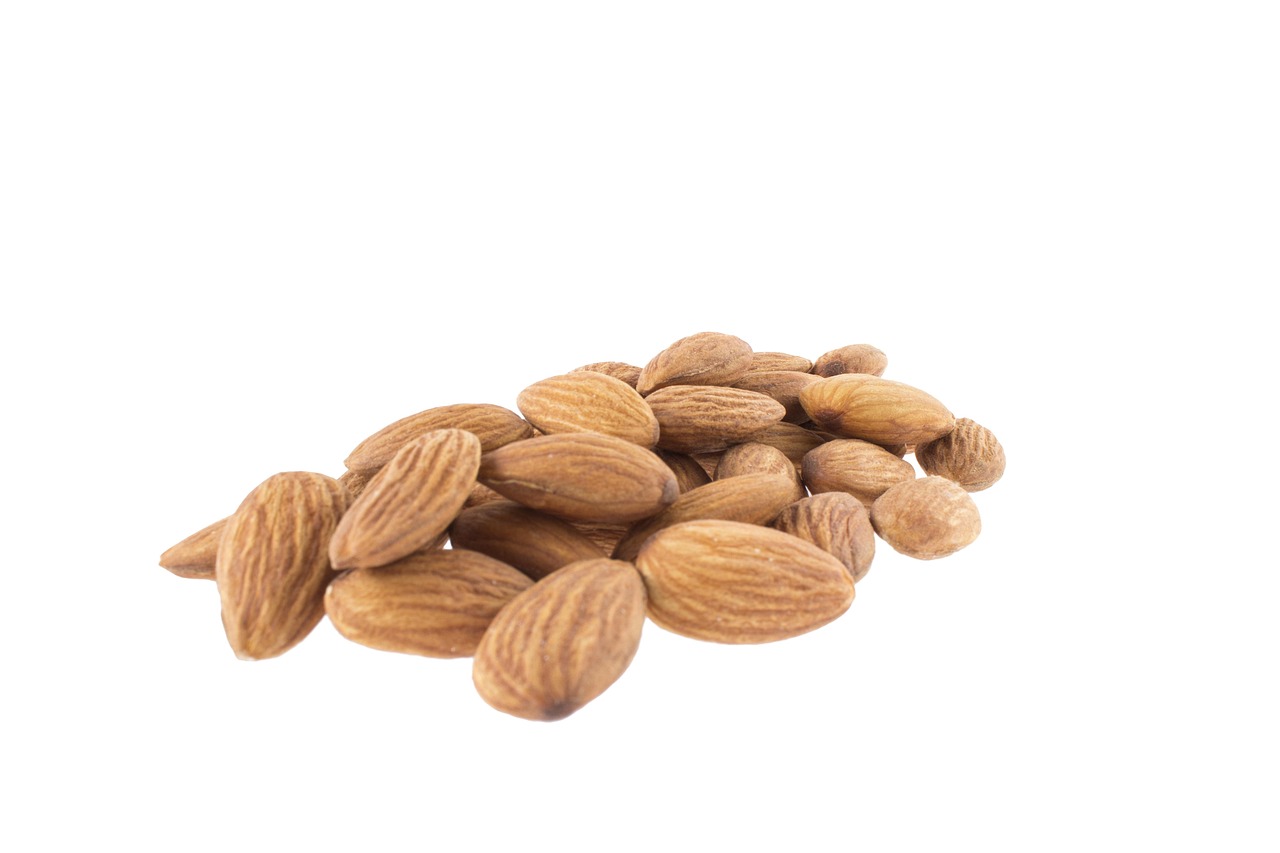Effective pruning for almond orchard maintenance involves removing dead, diseased, or overcrowded branches. This process enhances tree health, improves sunlight penetration, and increases fruit yield. Proper timing and techniques are essential to promote growth and ensure the long-term productivity of almond trees.
Almond orchards require careful management to thrive and produce high-quality nuts. One of the most crucial aspects of this management is pruning. Pruning is not merely about cutting branches; it is about understanding the needs of the trees and applying techniques that promote healthy growth and maximize yields. Effective pruning can lead to stronger trees, better air circulation, and improved light exposure.

In almond orchards, the right timing for pruning is vital. Typically, pruning should occur during the dormant season, which is late winter to early spring. This timing helps minimize stress on the trees and reduces the risk of disease. Understanding the specific growth habits of almond trees will aid in determining when and how to prune effectively.
Understanding Almond Tree Growth
Almond trees have unique growth patterns that influence how they should be pruned. They are deciduous trees that can grow quite large if not managed properly. To maintain their health, growers must consider several factors:
- Age of the Tree: Younger trees need different pruning techniques compared to mature ones.
- Tree Variety: Different almond varieties may have specific growth characteristics.
- Climate Conditions: Environmental factors can affect tree health and growth rates.
A well-pruned almond tree will have an open center that allows sunlight to reach all parts of the tree. This openness not only promotes better fruit production but also helps prevent diseases by ensuring good air circulation. Additionally, it is essential to remove any branches that cross or rub against each other, as this can create wounds that make the tree susceptible to pests and diseases.

Pruning Techniques
There are several techniques that almond growers can use when pruning their orchards. Each method serves a specific purpose and contributes to the overall health of the tree:
- Thinning: This involves removing entire branches to improve air circulation and light penetration.
- Heading Back: This technique shortens branches to promote bushier growth and more fruiting sites.
- Cleaning: Removing dead or diseased wood is crucial for maintaining tree health.
The following table outlines some common pruning techniques along with their purposes:
| Pruning Technique | Purpose |
|---|---|
| Thinning | Improves light exposure and air circulation. |
| Heading Back | Encourages denser growth and increased fruiting sites. |
| Cleaning | Removes unhealthy wood to prevent disease. |
Proper tools are essential for effective pruning. Growers should invest in high-quality pruning shears, loppers, and saws. Keeping tools sharp will ensure clean cuts, which help reduce the risk of damage to the trees. Additionally, wearing safety gear such as gloves and eye protection is important while performing any pruning tasks.

Timing of Pruning
The timing of pruning is crucial to its success. Pruning too early or too late can lead to a variety of problems, including poor growth and increased susceptibility to diseases. Generally, the best time to prune almond trees is during their dormant period. This typically falls between late winter and early spring before the buds begin to swell.
It is important to monitor weather conditions as well. Pruning during wet weather can increase the risk of disease, while pruning during extreme cold can damage new cuts. Observing the temperature and moisture levels will help ensure that pruning is performed under optimal conditions.
Common Mistakes in Pruning
Even experienced growers can make mistakes when pruning almond trees. Some common errors include:

- Over-pruning: Removing too much foliage can stress the tree and reduce yield.
- Poor Timing: Pruning at the wrong time can lead to damage or disease.
- Ineffective Cuts: Making improper cuts can hinder growth and expose trees to infection.
Avoiding these mistakes requires knowledge and practice. Regularly assessing the health and growth of almond trees will help growers adjust their techniques as needed for optimal results.
By understanding effective pruning practices, almond orchard managers can significantly enhance tree health and productivity. Proper maintenance leads to better yields and a more sustainable orchard overall. As we delve deeper into this topic in subsequent sections, we will explore specific strategies for different types of almond trees and regional considerations for successful orchard management.
Pruning Strategies for Different Almond Varieties
Almond trees come in various varieties, each with unique growth patterns and fruiting habits. Understanding these differences is essential for effective pruning. Different almond varieties may require tailored pruning techniques to achieve optimal health and productivity.
Nonpareil Almonds
The Nonpareil almond is one of the most popular varieties known for its high-quality nuts. This variety tends to have a more upright growth habit. For Nonpareil almonds, it is crucial to focus on:
- Thinning Out: Removing weak or crowded branches to enhance light penetration.
- Maintaining Shape: Keeping the center open to promote air circulation.
- Heading Back: Encouraging lateral branch growth to maximize nut production.
Pruning should ideally occur during the dormant season, ensuring that cuts heal before new growth begins. This practice supports the tree’s vigor and leads to better fruit yields.
Carmel Almonds
Carmel almonds are another widely cultivated variety, recognized for their excellent shell quality. These trees typically have a broader canopy, making it essential to focus on:
- Selective Thinning: Reducing the number of branches while maintaining the overall structure of the tree.
- Encouraging New Growth: Cutting back older wood to stimulate the growth of younger branches that produce more nuts.
Regularly assessing the tree’s growth will help determine when to prune and how much to remove. Maintaining a balance between new and old growth is vital for sustaining yields over time.
Seasonal Pruning Considerations
Seasonal changes can significantly impact the pruning strategies used in almond orchards. Understanding how different seasons affect tree health and growth is essential for successful orchard management.
Winter Pruning
Winter is the primary time for pruning almond trees. During this dormant season, trees conserve energy, making it an ideal time for extensive pruning activities. Key considerations during winter pruning include:
- Assessing Tree Health: Before pruning, evaluate each tree for signs of disease or damage.
- Avoiding Wet Conditions: Pruning during dry weather minimizes disease risk.
- Focusing on Structure: Establishing a strong framework by removing weak or crossing branches.
This period allows for effective cuts that promote new growth and fruiting in the upcoming growing season.
Summer Pruning
While winter is primarily for major pruning tasks, summer pruning can also be beneficial. This practice focuses on light pruning and can include:
- Removing Suckers: Cutting back any vigorous shoots that grow from the base of the tree.
- Shaping Trees: Adjusting the canopy to ensure adequate sunlight reaches all parts of the tree.
Summer pruning should be limited to avoid stressing the tree during its active growth phase. It should be done sparingly and with purpose to maintain tree health.
Pest and Disease Management Through Pruning
One of the indirect benefits of effective pruning is improved pest and disease management. Properly pruned trees are less susceptible to various issues that can affect almond production.
Pest Prevention
Pests such as aphids and spider mites thrive in dense foliage. By maintaining an open canopy through regular pruning, almond growers can reduce the likelihood of pest infestations. Some strategies include:
- Removing Infested Wood: Regularly inspect trees and prune away any branches showing signs of pest activity.
- Avoiding Overcrowding: Ensure trees have enough space between them to minimize competition for resources.
Disease Reduction
Diseases such as brown rot and shot hole disease can severely impact almond production. Effective pruning helps manage these risks by:
- Promoting Airflow: Increased airflow reduces humidity around the leaves, limiting disease spread.
- Removing Diseased Material: Promptly cutting away any infected branches helps contain diseases.
It is essential to be vigilant about tree health throughout the year. Regular checks can help identify potential problems before they escalate.
The Role of Technology in Pruning
Advancements in technology have transformed how almond growers approach orchard maintenance, including pruning. Utilizing modern tools and techniques can enhance efficiency and effectiveness.
Drones and Imaging Technology
Drones equipped with imaging technology can provide valuable insights into tree health. Growers can use these tools to:
- Monitor Canopy Density: Identify areas that may require thinning.
- Assess Tree Vigor: Detect signs of stress or disease early on.
Precision Pruning Tools
Modern precision tools allow for more accurate cuts with less damage to the tree. These tools include electric pruners and specialized saws designed for orchard use. Benefits include:
- Reduced Physical Strain: Ergonomically designed tools make pruning less labor-intensive.
- Cleaner Cuts: Enhanced cutting technology promotes faster healing of wounds on trees.
The integration of technology into traditional practices enhances overall orchard management and promotes a healthier crop yield.
Pruning for Specific Growth Stages
Understanding the different growth stages of almond trees is essential for effective pruning. Each stage presents unique characteristics and requires specific pruning strategies to promote healthy growth and maximum productivity.
Young Trees (0-3 Years)
During the early years, the primary goal of pruning is to establish a strong framework for the tree. Young almond trees need careful attention to ensure they develop a healthy structure. Key practices include:
- Establishing a Central Leader: Select the healthiest shoot to become the main leader, removing competing branches.
- Encouraging Lateral Branch Development: Pinch back the tips of lateral branches to promote bushier growth.
- Removing Suckers: Regularly eliminate suckers that grow from the base or around the trunk.
This approach lays the groundwork for future fruiting and helps the tree develop a balanced shape that can support heavy nut loads as it matures.
Mature Trees (3-10 Years)
As almond trees reach maturity, pruning focuses on maintaining health and productivity. This stage requires a more refined approach, including:
- Thinning for Airflow: Remove overcrowded branches to improve air circulation and light penetration.
- Heading Back Older Branches: Cut back older wood to encourage new growth that produces high-quality nuts.
- Assessing and Treating Pests: Monitor for pests and prune away any infested branches to prevent further spread.
Maintaining tree health during this stage is crucial, as it directly impacts nut yield and quality. Regular assessments will help guide pruning decisions and ensure optimal growth.
Old Trees (10+ Years)
Older almond trees may require specialized pruning techniques to sustain productivity. The following strategies are beneficial:
- Restorative Pruning: Remove dead or dying branches, focusing on rejuvenating older trees by promoting new growth.
- Selective Thinning: Gradually reduce the canopy density to improve light exposure and reduce competition among branches.
- Crown Maintenance: Maintain a balanced crown shape to support fruit production and overall tree health.
This approach helps extend the productive life of older trees, ensuring they continue to provide quality almonds for years to come.
Environmental Considerations in Pruning
The environment plays a significant role in how almond trees grow and how they should be pruned. Factors such as climate, soil type, and local pest populations can dictate specific pruning practices.
Climate Impacts
Different climates can influence tree growth rates and health. Almond trees thrive in Mediterranean climates but can face challenges in extreme weather conditions. Considerations include:
- Drought Conditions: In areas with limited water, trees may require less aggressive pruning to maintain energy reserves.
- Frost Risks: Pruning should be timed carefully to avoid exposing new growth to late frosts.
Soil Type and Quality
The type of soil affects tree nutrition and growth. Growers should consider soil quality when planning pruning activities. Important points include:
- Nutrient Management: Test soil regularly and adjust pruning practices based on nutrient availability.
- Water Drainage: Ensure proper drainage; poorly drained soils may require less aggressive pruning to avoid stressing the trees.
Training Systems for Almond Trees
The training system used for almond trees can significantly impact pruning practices. Different systems can optimize space, light, and air circulation within the orchard.
Open Center System
The open center system involves maintaining an open canopy, which allows light to penetrate to all parts of the tree. Key features include:
- Central Leader Removal: Prune out the central leader to encourage lateral branch development.
- Skeletal Framework: Focus on establishing a strong framework of scaffold branches.
This system is particularly effective in maximizing sunlight exposure and reducing disease pressure by improving airflow.
Modified Central Leader System
The modified central leader system retains a central leader while promoting secondary branching. This method has several advantages:
- Enhanced Stability: A central leader provides structural integrity to the tree, helping it withstand wind and heavy fruit loads.
- Increased Productivity: This system can support higher yields by maintaining an effective balance between growth and fruiting.
The Economic Impact of Pruning Practices
The financial implications of effective pruning cannot be overlooked. Proper pruning can lead to increased yields and better-quality nuts, directly affecting profitability.
Cost-Benefit Analysis
A thorough cost-benefit analysis can help growers understand the economic advantages of investing time and resources into proper pruning. Considerations include:
- Labor Costs: Evaluate the costs associated with hiring skilled labor for pruning activities versus potential yield increases.
- Equipment Investment: Consider the return on investment for purchasing modern pruning tools and technology.
Long-Term Sustainability
Effective pruning practices contribute not only to immediate profits but also to long-term sustainability within almond orchards. By promoting tree health, growers can ensure continued production over many years, leading to more stable income streams over time.
Incorporating these strategies into an overarching orchard management plan will enhance both productivity and sustainability in almond farming. As we explore further, we will delve into specific case studies that highlight successful pruning techniques in various regional contexts, showcasing best practices from industry leaders.
Case Studies in Successful Pruning Practices
To better understand the impact of effective pruning practices in almond orchards, it is beneficial to examine specific case studies. These examples illustrate how different growers have implemented strategies tailored to their unique environments and challenges.
Case Study 1: Sustainable Practices in California
A prominent almond grower in California has adopted a comprehensive pruning strategy that emphasizes sustainability. This grower focuses on:
- Integrated Pest Management: Combining pruning with pest control strategies to minimize chemical usage and promote natural predators.
- Regular Assessments: Conducting annual evaluations to adapt pruning techniques based on tree health and environmental changes.
- Community Engagement: Participating in local farming groups to share knowledge and receive feedback on effective practices.
As a result, this grower has seen a significant increase in nut quality and yield, while also reducing input costs through more efficient management practices.
Case Study 2: Innovative Technology Use
Another almond producer has integrated advanced technology into their pruning regimen. This grower utilizes drones for monitoring tree health, leading to more informed pruning decisions. Key strategies include:
- Using Drones for Mapping: Drones map the orchard, identifying areas that require thinning or additional care.
- Data-Driven Decisions: Data collected from drone surveys helps the grower prioritize pruning tasks based on tree vigor and health.
This approach has resulted in a more targeted pruning strategy, minimizing labor costs and enhancing overall orchard productivity.
Challenges in Almond Orchard Pruning
While effective pruning can yield numerous benefits, growers often face challenges that can complicate the process. Recognizing these challenges is essential for developing effective solutions.
Pest and Disease Management
Pests and diseases present significant challenges for almond growers. Effective pruning is crucial in managing these issues, but it requires constant vigilance. Some common problems include:
- Identifying Infestations Early: Pruning must be timed to address pest issues before they escalate, which means constant monitoring is necessary.
- Managing Disease Spread: Improper pruning can inadvertently spread diseases; hence, it’s essential to sanitize tools between cuts.
Labor Challenges
Finding skilled labor can be a persistent challenge in the agricultural sector. The intricacies of proper pruning require trained individuals who can perform tasks effectively. To address this, growers might consider:
- Training Programs: Implementing training sessions for workers to ensure they understand effective pruning techniques.
- Utilizing Technology: Employing automated tools to assist laborers, reducing the reliance on skilled manual labor.
Future Trends in Almond Orchard Management
The future of almond orchard management is likely to see even more advancements in technology and sustainable practices. Some anticipated trends include:
- Increased Automation: Automation in pruning and other maintenance tasks will become more common, allowing for greater efficiency.
- Sustainable Practices: There will be a continued shift towards organic farming and reduced pesticide use as consumer demand for sustainably sourced almonds grows.
- Precision Agriculture: Enhanced data analytics and precision agriculture techniques will help farmers make more informed decisions regarding orchard care.
These trends will not only improve productivity but also ensure that almond farming remains viable in the face of changing climate conditions and market demands.
Conclusion
Effective pruning is a vital component of successful almond orchard maintenance. By employing the right techniques tailored to specific tree varieties and growth stages, growers can enhance tree health and maximize yields. Understanding seasonal considerations, environmental impacts, and technological advancements further enriches the approach to pruning.
The integration of sustainable practices and innovative technologies is shaping the future of almond farming, ensuring that growers can meet both productivity goals and environmental responsibilities. As almond production continues to evolve, staying informed about the latest techniques and practices will be essential for achieving long-term success in this industry.
With ongoing research and adaptation, almond growers can navigate the complexities of orchard management effectively, ultimately leading to healthier trees and higher quality nuts for consumers around the world.
